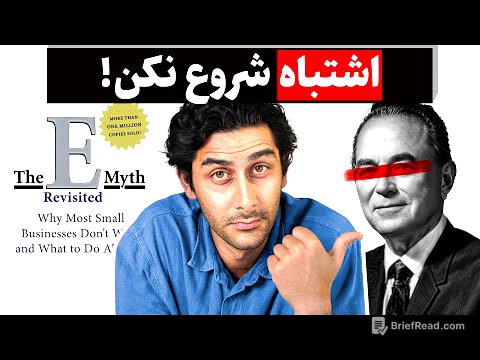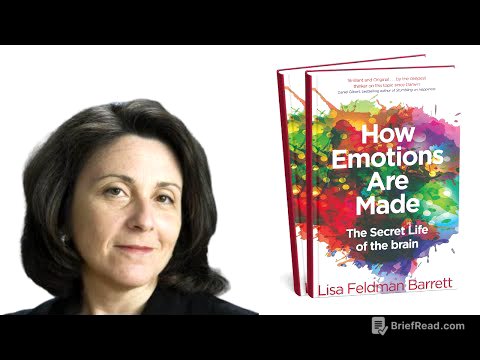TLDR;
This video features a discussion with Tom, who shares his unique perspectives on various health topics, challenging conventional medical beliefs. He argues that cardiovascular disease isn't primarily caused by blocked arteries, the heart isn't just a pump, and high blood pressure is an adaptive response. Tom also touches on the importance of structured water, the quality of food, the dangers of EMFs, and the misconceptions around ATP and viruses.
- Cardiovascular disease is not primarily caused by blocked arteries.
- The heart functions more like a hydraulic ram than a simple pump.
- High blood pressure is an adaptive response to a body not functioning correctly.
- Structured water is crucial for bodily functions, and charging water can enhance its benefits.
- Quality of food is paramount, focusing on whole, unprocessed foods.
- EMFs can negatively impact our electromagnetic fields, and mitigation strategies are essential.
- ATP is not the primary energy source in the body.
- Viruses, as commonly understood, do not exist.
Intro [0:00]
The video begins with Tom stating his contrarian views on several health topics, including heart attacks, blocked arteries, and the existence of viruses. He emphasizes the importance of critical thinking and questioning established beliefs, even in the face of widespread acceptance. Tom asserts that he knows what is not true, even if he doesn't have all the answers about what is true.
The actual cause of cardiovascular disease [1:12]
Tom challenges the conventional understanding of heart attacks, which attributes them to blocked arteries. He explains that doctors typically believe heart attacks occur when plaque blocks the coronary arteries, leading to insufficient blood flow and oxygen to the heart. Tom argues that this explanation doesn't account for why other organs with similar blood supply and vessel structure don't experience "attacks" like the heart. He points out that spleen attacks are virtually unheard of, suggesting the issue lies within the heart itself, not the blood vessels. Tom references studies from the 1940s-60s that showed a significant percentage of people who died from heart attacks had no blockage in the artery leading to the affected part of the heart. He explains that the heart goes glycolytic, building up acid, and causing cramps.
The heart isn’t a pump [28:26]
Tom argues against the common belief that the heart functions primarily as a pressure propulsion device. He questions how a one-pound organ can effectively pump sticky fluid through 10,000 miles of blood vessels, especially when blood velocity is highest as it enters the heart, not as it exits. He uses the analogy of a farmer needing to pump water from a pond back to a tank, noting that the pump should be at the bottom (the legs), not at the top (the heart). Tom describes how the aortic arch bends inward during systole, which contradicts the idea of it pushing blood. He explains that capillaries interacting with blood form a gel layer, which is negatively charged, pushing the positive charges into the liquid water and blood, causing them to repel and start moving. The heart functions like a hydraulic ram, stopping the blood and creating a spiral.
The truth about high blood pressure [38:34]
Tom explains high blood pressure as an adaptive response by the body to compensate for a faulty "pump," which refers to the body's overall system for circulating fluids. When factors like poor diet, lack of sunlight, and stress impair the body's ability to maintain adequate blood flow, the body narrows the blood vessels to increase pressure and ensure sufficient flow to the brain and other vital organs. Conventional medicine often treats this by prescribing drugs that widen the blood vessels, which Tom likens to putting a bigger hose on a faulty pump, thus alleviating the symptom but not addressing the underlying problem. He emphasizes that high blood pressure is not a disease but a strategy the body uses to deal with improper living.
There’s a fourth phase of water [54:57]
Tom introduces the concept of a fourth phase of water, known as structured or gel-phase water, which exists in our bodies. Unlike solid, liquid, or gas, this structured water is charged and crucial for various bodily functions. He explains that the water in our cells is not just liquid but has a gel-like structure that facilitates energy and charge. Tom suggests that drinking charged water can make it easier for the body to maintain this structure, which is essential for blood flow and joint function.
The protocol Tom uses to purify and charge his water [1:04:16]
Tom describes his elaborate protocol for purifying and charging water. He starts by collecting water from a local spring, which he considers the best source due to its natural emergence and mineral content. For town water, he uses a carbon filter to remove impurities and then runs the water through a spiral copper pipe to energize it. He adds sea salt, particularly purple bamboo salt, for mineralization and then uses an analemma wand or MEA water device to vortex and charge the water. Tom also uses Aquadea shower heads, which create a spiral formation to further enhance the water's structure.
Food quality is everything [1:22:19]
Tom emphasizes that the quality of food is paramount. He advises against eating anything with a list of ingredients, advocating for whole, unprocessed foods like carrots, bananas, and meat. He prioritizes knowing the source and production methods of his food, such as eating butter from cows he knows and vegetables from his garden. Tom dismisses the importance of counting calories or macronutrients, focusing instead on the overall quality and naturalness of the diet.
How Tom protects himself from EMFs [1:32:26]
Tom discusses the dangers of man-made electromagnetic fields (EMFs), which he believes disrupt the body's natural electromagnetic field. He avoids mobile devices, uses a wired computer with an Ethernet connection, and has no Wi-Fi in his house. Tom employs various devices to mitigate EMFs, though he admits uncertainty about their effectiveness. He also spends time barefoot in the grass to connect with the Earth's natural electromagnetic field.
ATP has nothing to do with energy [1:37:48]
Tom challenges the conventional understanding of ATP (adenosine triphosphate) as the primary energy currency of the body. He references Gilbert Ling's research, which suggests that ATP has nothing to do with energy production. Tom explains that ATP may play a role in creating the environment for cells to become charged but is not the direct source of energy.
Viruses don’t exist [1:45:46]
Tom asserts that viruses, as commonly understood, do not exist. He critiques the methods used to "isolate" viruses, such as the polio and measles viruses, arguing that these methods do not prove the existence of viruses. He describes how the "isolation" of the measles virus involves adding centrifuged snot from someone with measles to a culture of monkey kidney cells, along with kidney poison antibiotics, taking away the food of the kidney cells, and adding horse serum and fetal bovine serum and some other chemicals like trison. He notes that the same cell breakdown occurs even without the addition of material from a measles patient, suggesting that the cell death is due to the toxic environment created in the culture, not a virus.








